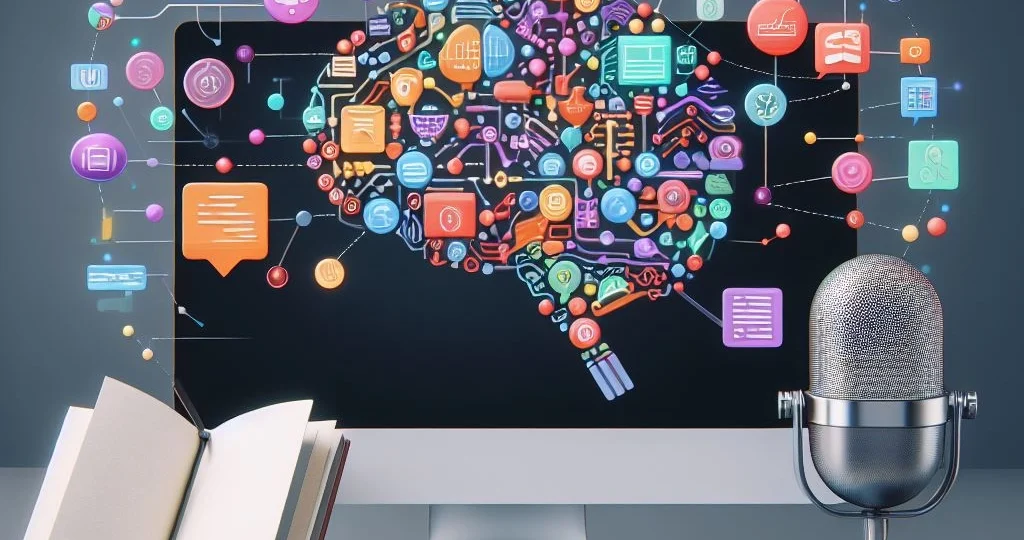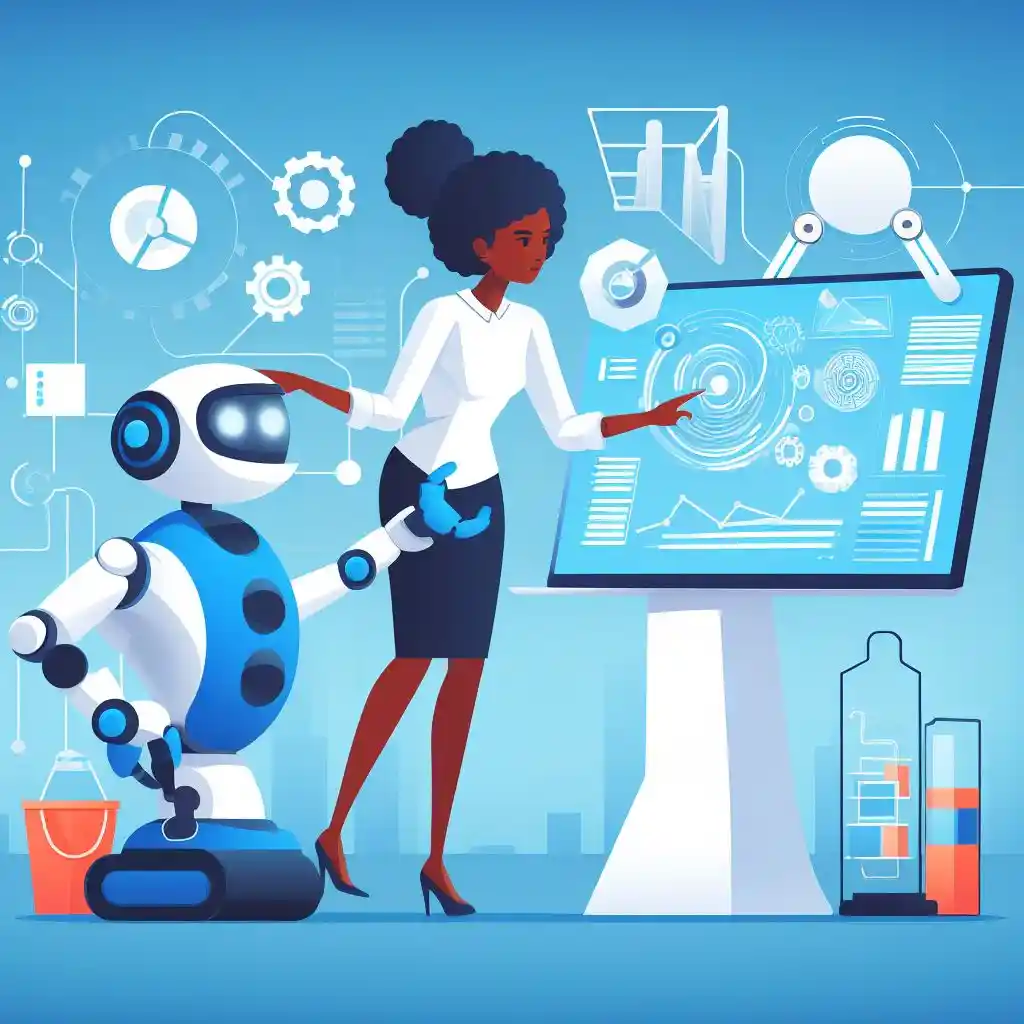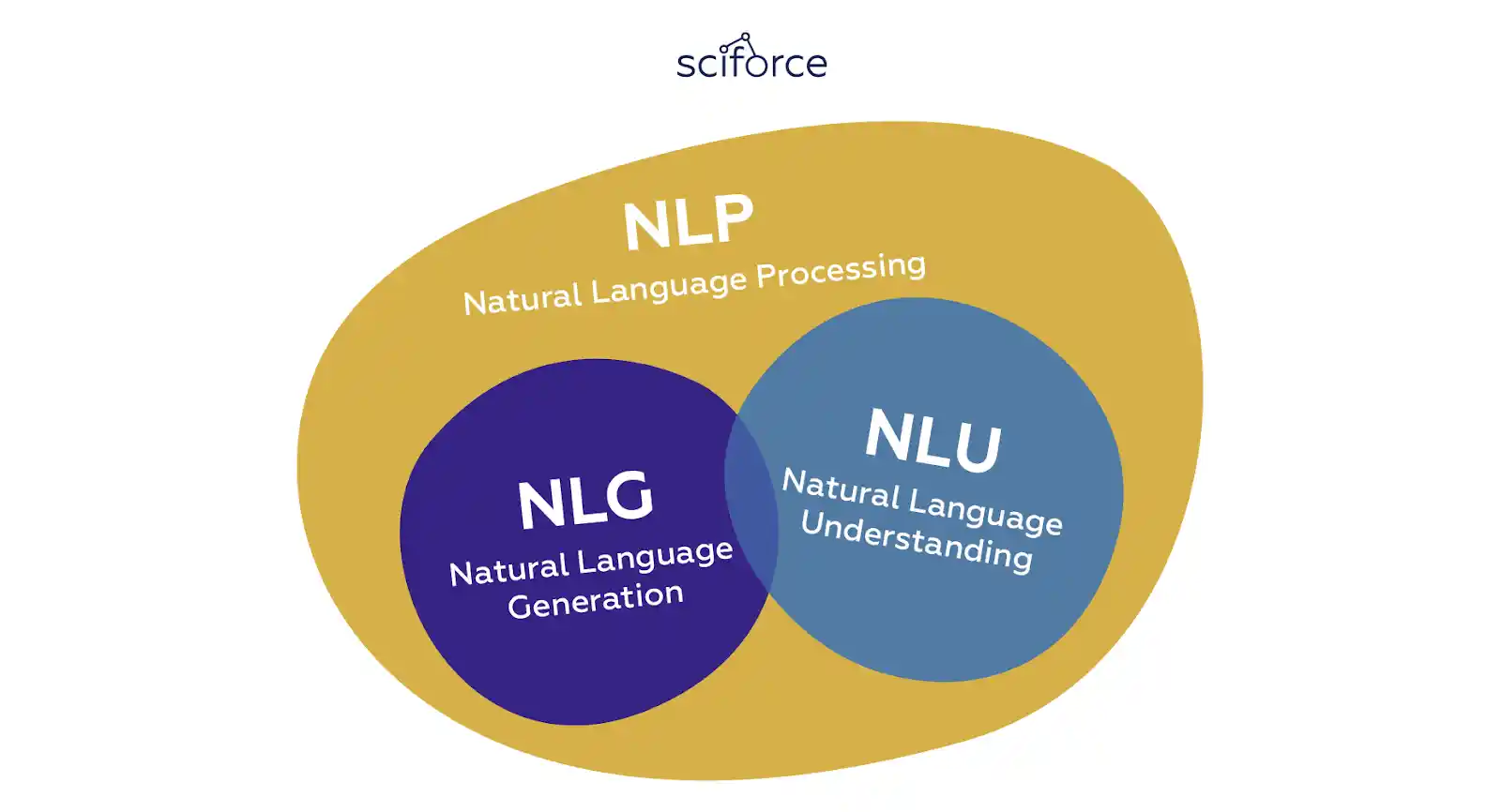
What is Natural Language Processing (NLP)
Natural language processing (NLP) is a field of artificial intelligence that allows computers to understand, interpret, and manipulate human language. NLP combines a variety of techniques, including computational linguistics, statistics, machine learning, and deep learning, to process text and speech data.
Why Natural Language Processing (NLP) is Important

Natural language processing (NLP) is important because it allows computers to understand and respond to human language. NLP has a wide range of applications, including machine translation, speech recognition, chatbots, sentiment analysis, information extraction, and information retrieval.
Here are some reasons why NLP is important:
- NLP allows us to communicate with computers in natural language. This makes computers more user-friendly and accessible to a wider range of people.
- NLP can help us to understand information better. NLP can be used to extract important information from text and speech, as well as to analyze sentiment and the relationships between words and phrases.
- NLP can improve productivity and efficiency. NLP can be used to automate tasks, such as machine translation, spell checking, and data analysis.
- NLP can help us to make better decisions. NLP can be used to analyze large and complex data sets to find patterns and trends that are difficult for humans to see.
Natural Language Processing (NLP) Examples

NLP has a wide range of applications in every sector, including:
- Financial sector
- Healthcare sector
- Retail sector
- Education sector
- Legal sector
NLP can be used to analyze financial data, such as financial statements and market news, to identify trends and patterns that can help investors make better decisions. NLP can also be used to develop fraud detection systems and to improve customer service.
NLP can be used to analyze medical data, such as medical records and test results, to help doctors diagnose diseases more accurately and to recommend the best treatment for each patient. NLP can also be used to develop virtual assistant systems that can help patients answer questions and manage their care.
NLP can be used to analyze customer data, such as product reviews and purchase history, to better understand customer needs and wants. NLP can also be used to develop product recommendation systems and to improve customer service.
NLP can be used to develop more personalized and effective education systems. NLP-based education systems can customize lesson content and learning speed to the needs of each individual student. NLP can also be used to develop automated assessment systems and to provide more personalized feedback to students.
NLP can be used to analyze legal data, such as laws and court decisions, to help lawyers find relevant information and to prepare their cases. NLP can also be used to develop plagiarism detection systems and to improve customer service.
NLP is also used in a variety of AI tools, such as:
- Chatbots
- Search engines
- Machine translation systems
- Speech recognition systems
NLP-based chatbots can help customers find the information they need and to resolve their issues quickly and easily. Chatbots can also be used to collect customer data and to provide more personalized customer support.
Search engines use NLP to understand user intent and to return the most relevant search results. NLP is also used to develop features such as text prediction and image search.
Machine translation systems use NLP to translate text from one language to another accurately and fluently. Machine translation systems can also be used to develop features such as speech translation and real-time translation.
Speech recognition systems use NLP to recognize human speech and convert it into written text. Speech recognition systems can be used for a variety of applications, such as voice assistants, voice control systems, and transcription systems.
Types of Natural Language Processing (NLP)

Natural language processing (NLP) has two main subfields, Natural language understanding (NLU) and natural language generation (NLG):
Natural language understanding (NLU)
Natural language understanding (NLU) is a subfield of natural language processing (NLP) that focuses on analyzing the meaning behind text or speech. NLU allows computers to understand the user’s intent and sentiment, as well as find relationships between words and phrases. Here are some examples of NLU:
- Identifying the user’s intent in a search query, such as “best Italian restaurant in Jakarta” or “how to make chocolate cake.”
- Understanding the user’s sentiment in a product review, such as “I really like this product” or “I’m not satisfied with this product.”
- Finding relationships between words and phrases in text, such as “car” and “vehicle” or “president” and “head of state.”
Natural language generation (NLG)
Natural language generation (NLG) is a subfield of NLP that focuses on creating text or speech that is coherent and meaningful. NLG is used in a variety of applications, such as chatbots, machine translation systems, and automatic text generators. Here are some examples of NLG:
- Creating a summary of a news article.
- Translating text from one language to another.
- Generating creative text, such as poems, short stories, and scripts.
How Natural Language Processing (NLP) works

Here are some basic steps in how NLP works:
- Tokenization: Tokenization is the process of breaking text into smaller units, such as words, punctuation, and numbers.
- POS tagging: POS tagging is the process of labeling each token with its part-of-speech, such as noun, verb, adjective, or adverb.
- Lemmatization: Lemmatization is the process of converting each token to its base form, or lemma. For example, the words “write”, “writing”, and “written” would all be converted to the lemma “write”.
- Parsing: Parsing is the process of analyzing the grammatical structure of a sentence.
- Semantic analysis: Semantic analysis is the process of analyzing the meaning of a sentence.
Natural Language Processing (NLP) Algorithms

Here are some of the most common algorithms used in NLP:
- Support vector machines (SVMs)
- Decision trees
- Random forests
- Recurrent neural networks (RNNs)
- Convolutional neural networks (CNNs)
SVMs are a machine learning algorithm used for classification and regression. SVMs have been widely used to develop NLP models for a variety of tasks, such as sentiment classification, information extraction, and speech recognition.
Decision trees are a machine learning algorithm used for classification and regression. Decision trees have been widely used to develop NLP models for a variety of tasks, such as spam classification, text prediction, and sentiment analysis.
Random forests are an ensemble learning method that uses many decision trees to improve accuracy and performance. Random forests have been widely used to develop NLP models for a variety of tasks, such as sentiment classification, information extraction, and text analysis.
RNNs are a type of deep learning model used to process sequential data. RNNs have been widely used to develop NLP models for a variety of tasks, such as machine translation, speech recognition, and text generation.
CNNs are a type of deep learning model used to process image and video data. CNNs have also been widely used to develop NLP models for a variety of tasks, such as sentiment analysis, text classification, and information extraction.
The choice of algorithm used in NLP depends on the specific task that needs to be solved. For example, for the task of sentiment classification, an SVM or random forest algorithm can be used. For the task of machine translation, an RNN or CNN algorithm can be used.
Limitations of Natural Language Processing (NLP)

Here are some of the limitations of NLP:
- NLP requires large amounts of high-quality data.
- NLP is domain-specific.
- NLP is susceptible to bias.
NLP models are trained on text and speech data. The larger and higher-quality the data used to train the model, the better the model will perform. However, high-quality text and speech data can be difficult and expensive to obtain.
An NLP model trained for a specific task may not perform well on other tasks. For example, an NLP model trained for machine translation may not perform well on the task of sentiment analysis.
NLP models are trained on text and speech data generated by humans. As a result, NLP models can inherit the biases that exist in that data. For example, an NLP model trained on text data that is mostly positive in sentiment may be more likely to classify a new sentence as positive, even if it is actually neutral or negative.
RELATED POSTS
View all



